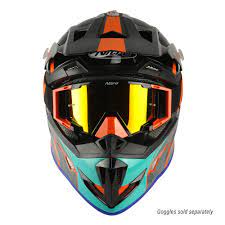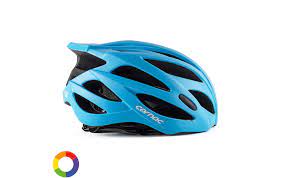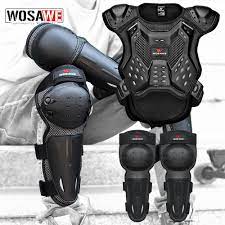Maximizing Safety: The Indispensable Role of MX Helmets in Motocross Riding

The Importance of MX Helmets: Protecting Your Head, Ensuring Your Safety
When it comes to motocross (MX) riding, safety should always be your top priority. One essential piece of protective gear that every rider must have is a high-quality MX helmet. This article explores the importance of MX helmets and why they are crucial for your safety on the track.
Protecting Your Head: The Vital Role of MX Helmets
Your head houses one of the most vital organs in your body – your brain. In the event of a crash or impact, an MX helmet acts as a protective shield that significantly reduces the risk of head injuries. It absorbs and disperses the force of impact, minimizing the potential damage to your skull and brain.
MX helmets are specifically designed with features that enhance their protective capabilities. They are constructed using advanced materials such as fiberglass, carbon fiber, or polycarbonate, which provide excellent strength and impact resistance while keeping the helmet lightweight.
Choosing the Right MX Helmet
When selecting an MX helmet, there are several factors to consider:
- Fitting: The helmet should fit snugly on your head without any discomfort or pressure points. It should not move around or slide off during riding.
- Certification: Look for helmets that meet safety standards such as DOT (Department of Transportation) or ECE (Economic Commission for Europe) certification.
- Ventilation: Opt for helmets with adequate ventilation to keep you cool during intense rides.
- Visor: A sturdy visor offers protection from debris and enhances visibility while riding.
Maintaining Your MX Helmet
Proper maintenance of your MX helmet is essential to ensure its continued effectiveness. Here are a few tips:
- Cleaning: Regularly clean the helmet’s exterior and interior using mild soap and water. Avoid using harsh chemicals that may damage the helmet’s materials.
- Storage: Store your helmet in a cool, dry place away from direct sunlight and extreme temperatures. Avoid hanging it on handlebars or mirrors, as this can cause damage.
- Replacement: Over time, helmets may experience wear and tear or be involved in accidents that compromise their integrity. It is crucial to replace your helmet if it shows signs of damage or has been involved in a crash.
Ride Safe, Ride Smart
An MX helmet is not just a piece of equipment; it is an investment in your safety. Never compromise on the quality or fit of your helmet, as it can make all the difference in protecting you during an accident.
Remember, accidents can happen even to the most experienced riders. By wearing a well-fitted MX helmet every time you ride, you are taking a crucial step towards ensuring your safety on the track.
So gear up with confidence, protect your head with an MX helmet, and enjoy the thrilling world of motocross while prioritizing your well-being!
Eight Essential Tips for Selecting and Maintaining Your Motocross Helmet
- Ensure proper fit
- Check for certifications
- Inspect the shell
- Consider ventilation
- Opt for removable liners
- Check visor quality
- Strap securely
- Replace when necessary
Ensure proper fit
Ensuring a proper fit is crucial when it comes to MX helmets. A helmet that doesn’t fit correctly can compromise its effectiveness in protecting your head during a crash or impact. When trying on an MX helmet, make sure it sits snugly on your head without any discomfort or pressure points. It should not move around or slide off easily while riding. A properly fitted helmet provides maximum coverage and stability, giving you peace of mind knowing that you are well-protected on the track. Don’t underestimate the importance of a proper fit – it could be the difference between a safe ride and potential injury.
Check for certifications
When selecting an MX helmet, one important tip to keep in mind is to check for certifications. Look for helmets that meet safety standards such as DOT (Department of Transportation) or ECE (Economic Commission for Europe) certification. These certifications ensure that the helmet has undergone rigorous testing and meets the necessary safety requirements. By choosing a certified MX helmet, you can have peace of mind knowing that you are investing in a helmet that provides reliable protection for your head while riding.
Inspect the shell
Inspecting the shell of your MX helmet is a crucial step in ensuring its effectiveness and your safety. Take the time to carefully examine the outer surface for any cracks, dents, or signs of damage. Even minor damage can compromise the helmet’s structural integrity and reduce its ability to protect you in case of an impact. If you notice any issues, it’s essential to replace your helmet immediately. By regularly inspecting the shell, you can have peace of mind knowing that your MX helmet is in optimal condition and ready to provide maximum protection on every ride.
Consider ventilation
When choosing an MX helmet, one important tip to keep in mind is to consider ventilation. Riding motocross can be physically demanding and intense, causing riders to sweat and generate heat. A helmet with proper ventilation features, such as strategically placed vents, allows for better airflow and helps keep you cool during your rides. Adequate ventilation not only enhances comfort but also prevents excessive heat buildup inside the helmet, reducing the risk of discomfort or fatigue. So, when selecting your MX helmet, make sure to prioritize helmets with good ventilation to enhance your overall riding experience.
Opt for removable liners
When choosing an MX helmet, it is advisable to opt for one with removable liners. Removable liners offer several benefits, including easy cleaning and maintenance. After intense rides, sweat and dirt can accumulate inside the helmet, leading to unpleasant odors and potential hygiene issues. With removable liners, you can easily take them out and clean them separately, ensuring a fresh and comfortable fit every time you ride. Additionally, removable liners allow for customization and adjustment according to your preferences, providing a more personalized and snug fit for optimal safety and comfort on the track.
Check visor quality
One important tip when it comes to MX helmets is to always check the quality of the visor. The visor plays a crucial role in protecting your eyes and face from debris, dust, and sunlight while riding. Ensure that the visor is made from durable materials that can withstand impact and provide clear visibility. A sturdy and well-designed visor will not only enhance your safety but also improve your overall riding experience. So, before hitting the track, take a moment to inspect the visor of your MX helmet and make sure it meets the necessary standards for optimal protection.
Strap securely
One important tip when it comes to wearing an MX helmet is to ensure that the strap is securely fastened. The strap plays a crucial role in keeping the helmet in place during a ride, especially in the event of a crash or impact. By ensuring that the strap is properly tightened and secured under your chin, you can significantly reduce the risk of the helmet coming off or shifting during a ride. This simple yet vital step helps to ensure maximum protection and safety while enjoying the exhilarating experience of motocross riding.
Replace when necessary
Replacing your MX helmet when necessary is a critical aspect of ensuring your safety on the track. Over time, helmets can experience wear and tear, compromising their protective capabilities. Additionally, if your helmet has been involved in a crash or impact, it may have suffered internal damage that is not visible to the naked eye. Therefore, it is crucial to regularly inspect your helmet for any signs of damage and replace it if necessary. Don’t take chances with your safety – invest in a new MX helmet when needed to maintain optimal protection during every ride.


